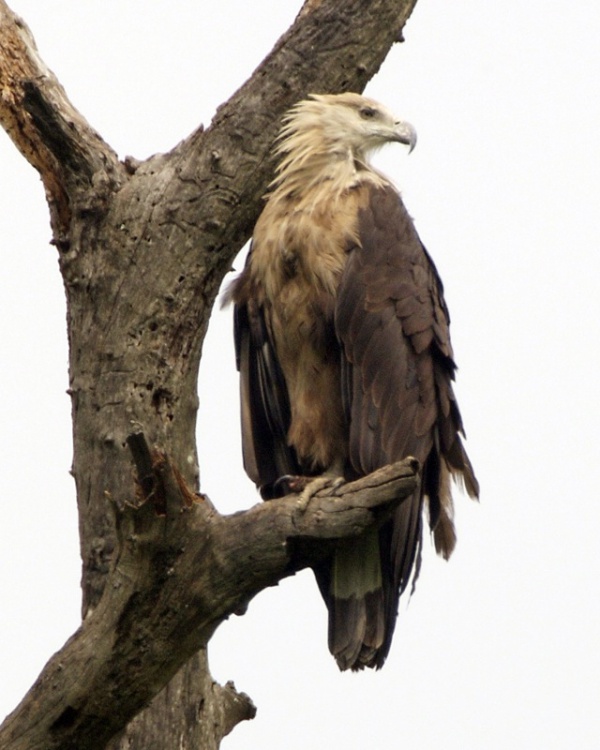Facts About Pallas's fish eagle
Pallas's fish eagle, also known as Pallas's sea eagle or band-tailed fish eagle, is a striking, large brown raptor found in the eastern Palearctic region. This magnificent bird breeds in countries such as Kazakhstan, Russia, China, India, Bangladesh, Myanmar, and Bhutan. Unfortunately, it is listed as Endangered on the IUCN Red List and exhibits partial migratory behavior.
The Pallas's fish eagle features a light brown hood, a white face, dark brown wings, a rufous back, and a distinctive white stripe on its tail. Juvenile eagles are darker and lack the iconic tail band. They have an impressive wingspan of 180–215 cm and measure 72–84 cm in length. Females are generally larger, weighing between 4.4–7.3 kg, whereas males weigh around 2–3.3 kg. Their diet mainly consists of large freshwater fish, but they also hunt water birds.
Scientifically named Aquila leucorypha, this species was first described by Peter Simon Pallas in 1771. Pallas's fish eagle stands out as a unique sea eagle with no close living relatives in its genus. Studies of its molecular data and physical characteristics provide insights into its evolutionary history and potential connections to other sea eagle species.
Today, the Pallas's fish eagle is found in landlocked regions, a result of geological events such as the collision of the Indian Plate with Eurasia. It likely evolved from sea eagles that once inhabited the northwestern Bay of Bengal when it was a shallow strait dividing mainland Asia from India.
With a global population of fewer than 2,500 individuals, Pallas's fish eagle faces numerous threats, including direct persecution, habitat degradation, pollution, and overfishing. In India, the spread of water hyacinth in lakes further hampers the eagle's ability to catch prey. Despite its extensive range, the Pallas's fish eagle remains rare and isolated in many parts of its territory, posing significant challenges to its breeding success.

 India
India